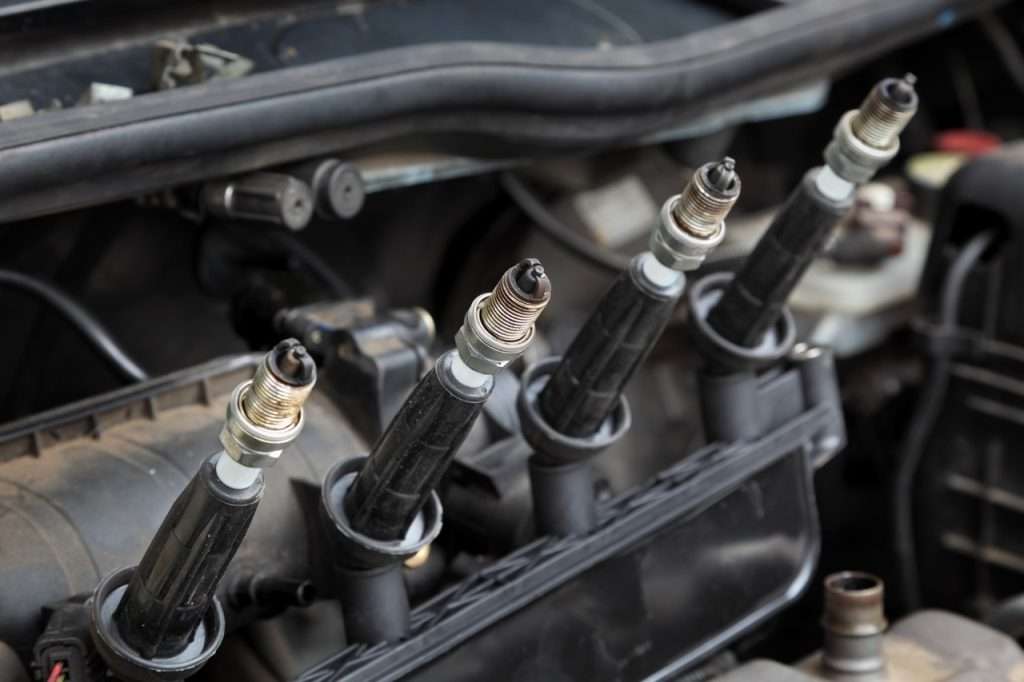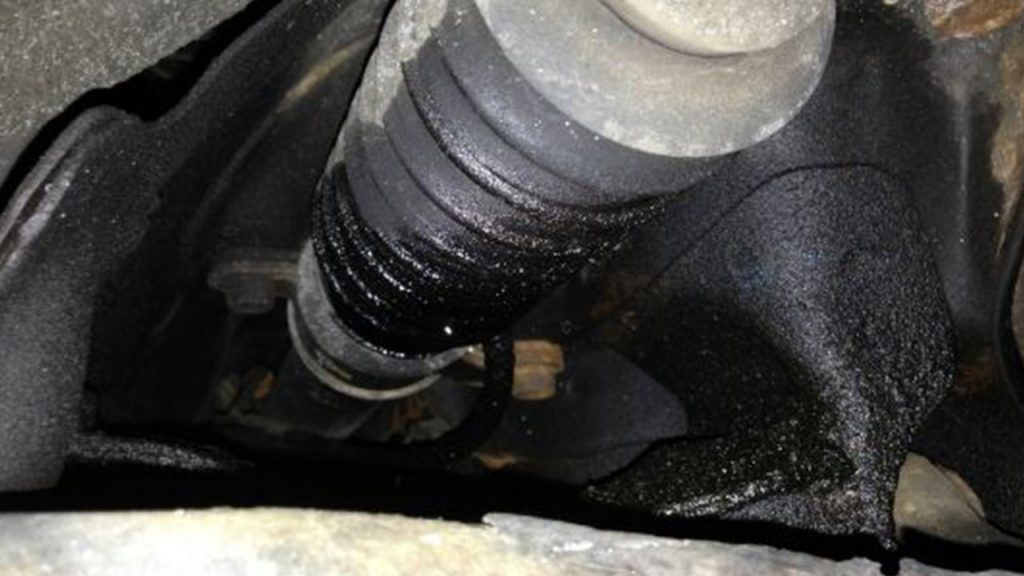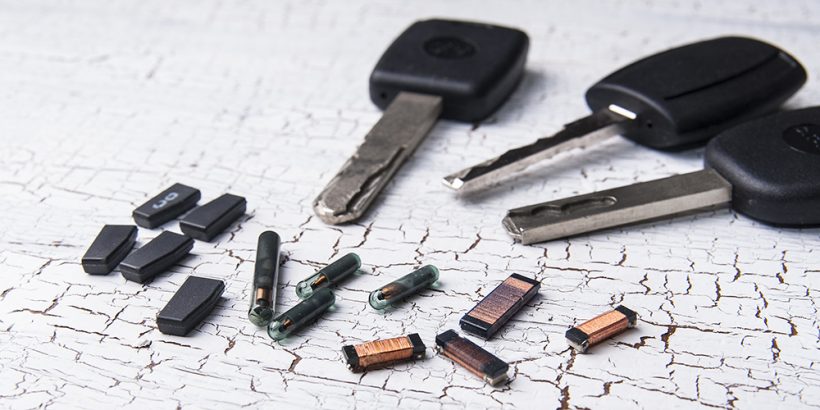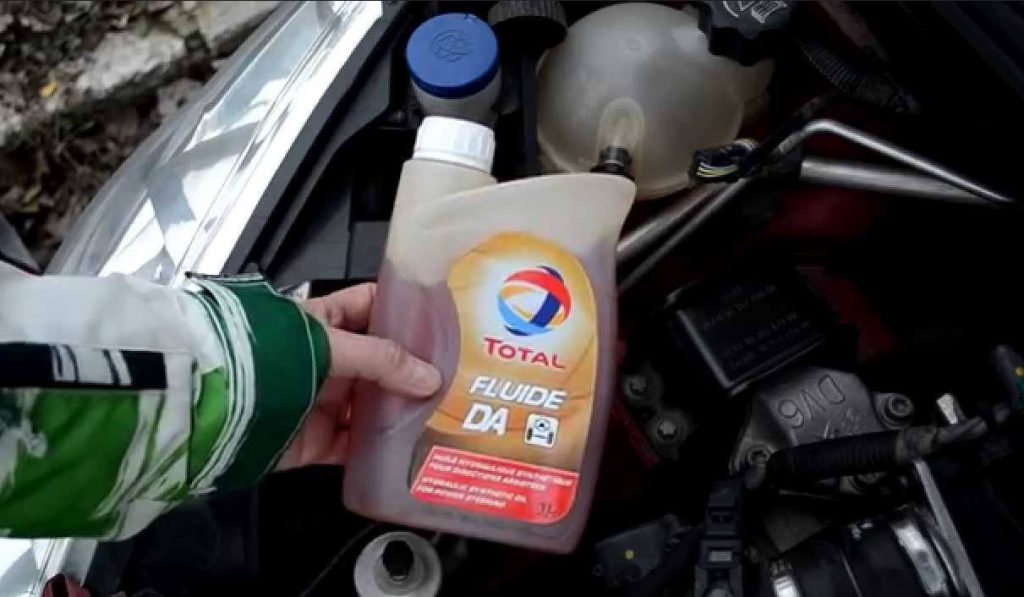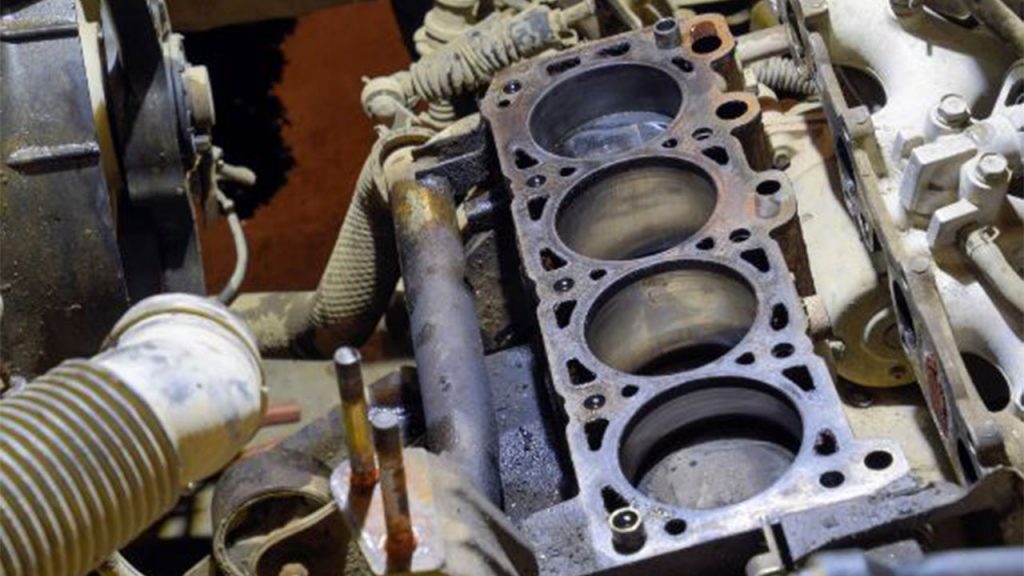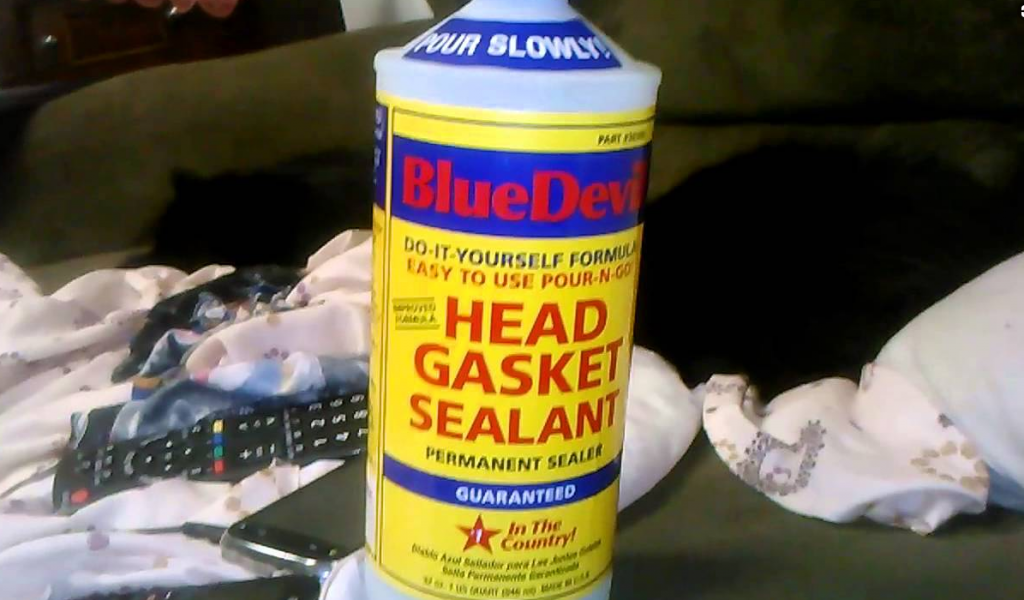Looking for symptoms of a faulty spark plug? Spark plugs are responsible for igniting the air-fuel mixture in your engine’s combustion chamber, creating the explosion that powers your car. Without spark plugs, your engine wouldn’t run which is why we showing some of the symptoms of a faulty spark plug and how to fix them.
Good spark plugs ensure smooth engine performance, good fuel efficiency, and reduced emissions. However, when the spark plugs are faulty, worn out, or damaged, they can cause a range of issues, from poor acceleration to difficulty starting your car. This is why keeping your spark plugs in good condition is crucial for the overall health and performance of your vehicle. In this article, we’ll break down the common symptoms of faulty spark plugs, how to Diagnose a Faulty Spark Plug, and how to fix them. As for the fixes, we will cover two approaches to fixing each diagnosed spark plug fault, which includes cleaning and replacement.
Related article:
- spark plug replacement cost|HOW MUCH DOES IT COST TO REPLACE SPARK PLUGS
- Spark Plug Misfire Symptoms (Symptoms of Spark Plug Misfire When Driving)
- Signs-of-Bad-spark-plug-wires
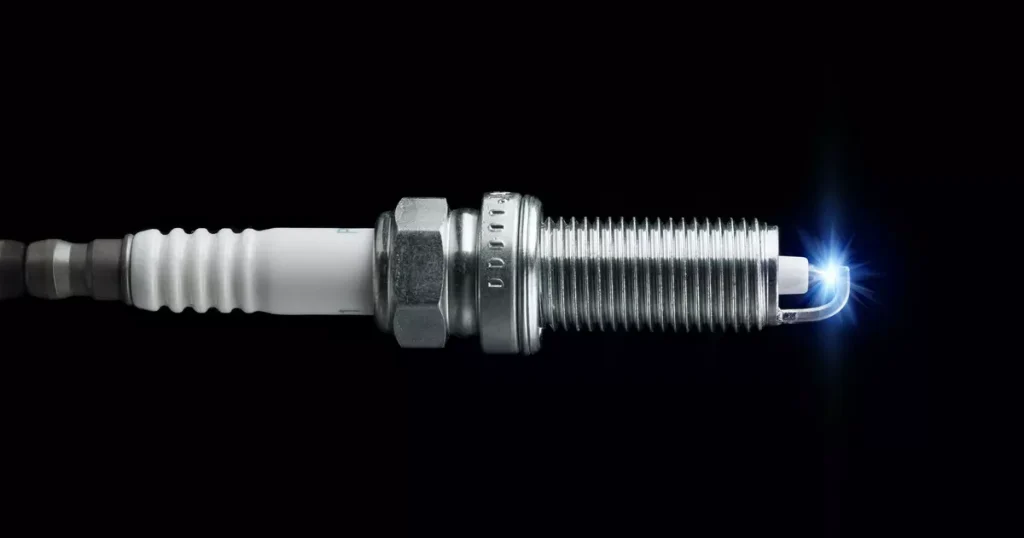
How Spark Plugs Work
Spark plugs are an essential part of your engine’s ignition system. They sit in the cylinder head, where they create a spark to ignite the air-fuel mixture in gasoline engines. This ignition generates a small explosion, which pushes the piston down and powers the engine. This process happens thousands of times per minute as you drive, ensuring your car runs smoothly and efficiently, so it is vital to check faulty spark plug symptoms and then fix them as they come.
Now, what are the common Symptoms of a Faulty Spark Plug?
When your car’s spark plugs start to wear out or fail, it can lead to a variety of problems that affect how your engine performs.
1.Engine Misfires.
A faulty spark plug causes an engine to misfire as it fails to ignite the air-fuel mixture in the cylinder, either due to weak sparks, delayed ignition, or no spark at all. This results in incomplete combustion, leaving unburned fuel and disrupting the engine’s power output and smooth operation, resulting in a misfiring engine.
This means the fuel-air mixture inside the cylinder did not ignite as it should, causing a noticeable stutter or loss of power during acceleration or steady driving.
2. Rough Idling
If your car shakes or vibrates while sitting still and you hear irregular engine sounds, this is rough idling. It might feel like the engine is sputtering or struggling to stay running.
A damaged or dirty spark plug cannot provide a consistent spark, which disrupts the smooth combustion cycle. This uneven firing causes the vibrations and erratic noises you notice when idling.
3. Difficulty Starting the Engine
If the spark plug can’t produce a strong enough spark, the fuel-air mixture won’t ignite properly. This can lead to longer cranking times or the engine not starting at all.
Cold weather amplifies this issue because colder temperatures make it harder for the fuel-air mixture to ignite, even with a good spark. Worn spark plugs only make it worse.
4. Reduced Fuel Economy
When spark plugs aren’t working correctly, the engine burns more fuel to compensate for the incomplete combustion. This means your car is wasting gas to maintain power, lowering your miles per gallon (MPG).
You may not notice a dramatic change right away, but over time, you’ll find yourself filling up the gas tank more often than usual, even if your driving habits haven’t changed.
5. Poor Acceleration or Throttle Response
Faulty spark plugs can delay the combustion process, meaning the engine doesn’t respond as quickly or smoothly when you press the gas pedal.
You might feel a delay or jerk when trying to accelerate quickly, such as when merging onto the highway or passing another vehicle.
6. Illuminated Check Engine Light
Most cars today have sensors that monitor engine performance. When a spark plug misfires or fails, the onboard computer picks up on it and triggers the check engine light.
The codes that are commonly associated with spark plug faults and cylinder misfires are the P030 X, which includes P0301 for cylinder 1, P0302 for cylinder 2, P0303 for cylinder 3, and so on). These all often point to spark plug problems.
7. Unusual Sounds
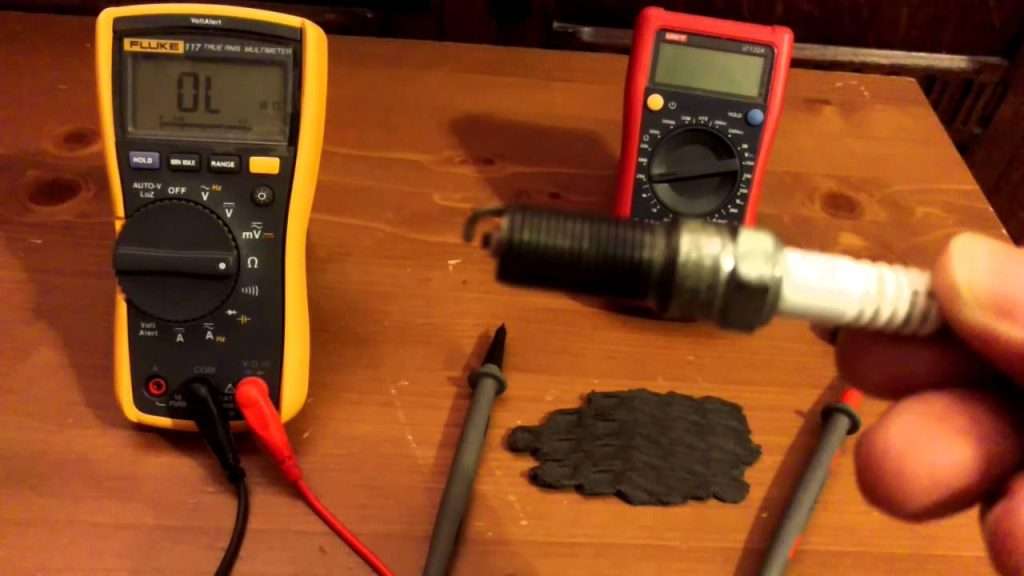
Faulty spark plugs can lead to strange engine noises like popping, knocking, or pinging. These sounds often occur because the combustion process isn’t happening at the right time or evenly across all cylinders.
So why will faulty spark plugs disrupt engine timing?
Well, if the spark isn’t consistent or strong enough, the combustion process may take place too early or too late during the combustion process, throwing off the engine’s timing and creating unusual noises.
8. Decreased Power Output
If your car feels like it’s struggling to climb hills or tow heavy items, even though the gas pedal is pressed hard, it could be due to worn spark plugs.
Spark plugs are essential for generating the energy that powers your engine. When they fail, the engine can’t produce the torque needed for demanding tasks, leading to noticeable power loss.
So, how do you Diagnose a Faulty Spark Plug:
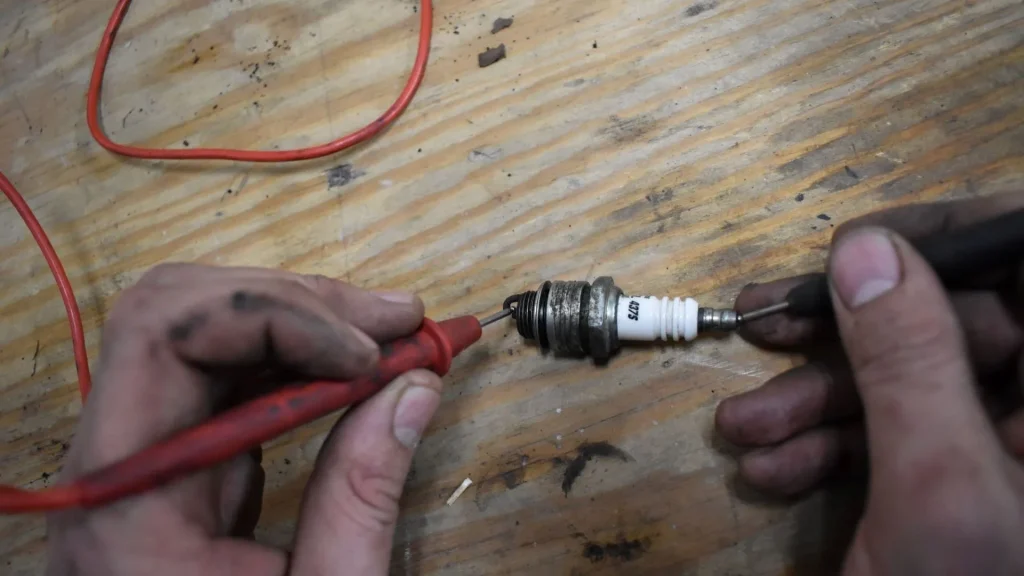
Well, diagnosing faulty spark plugs is simple with the right tools: You will need a spark plug socket, gap gauge, and multimeter. Begin by removing each spark plug and visually inspecting for damage. Look for black carbon buildup, indicating incomplete combustion, or oily residue, which could signal oil leaks. Also, check for cracks or worn electrodes, as these weaken the spark.
Next, test the spark plug’s functionality. Use a multimeter to measure resistance—healthy plugs typically read between 4,000 and 8,000 ohms. Alternatively, a spark plug tester can confirm if the plug generates a strong, consistent spark when connected to the ignition wire.
If the spark plug shows physical damage, high resistance, or fails the spark test, then you need to replace the spark plug to restore your engine’s performance.
Now, let’s move on to the third part of this video, where we look at
How to Fix Faulty Spark Plugs;
And we have 2 fixes for you here; One is to clean the spark plug, and the other is to replace the plug. Sometimes, cleaning your spark plugs may be a better option than replacing them, especially if they are simply fouled with carbon buildup or oil residue.
But if the plugs are cracked, or corroded, or the electrodes are worn out, replacement is necessary.
Cleaning can also be an option if your car is misfiring due to carbon buildup on the spark plug tips.
how to Clean a Spark Plug:
Beginning with the cleaning of the plug, here is how to Clean a Spark Plug:
1.Remove the Spark Plugs:
First, Locate Spark Plugs: they are usually located on top or side of the engine. You may need to remove other parts to access them, such as:
- The Engine covers
- Air intake components
- Other obstructing parts (like coils or wires)
Please check your vehicle’s manual for specific details on where to find the spark plugs for specific vehicles if it is not located on top or by the side of the engine.
Now for this process you Spark plug socket (usually a 5/8-inch or 13/16-inch socket size), Ratchet wrench, Extension bar (for hard-to-reach plugs)
And finally Torque wrench (for proper tightening of the plug back in)
Once you have access to the spark plugs:
- Start by removing the ignition wires or coil packs. Gently pull them off to avoid damaging them.
- Using the spark plug socket and ratchet, turn the spark plug counterclockwise to loosen it. Be sure to apply even pressure and avoid using excessive force.
- Once the spark plug is loose, carefully remove it from the socket
2. Use a Wire Brush or Spark Plug Cleaner:
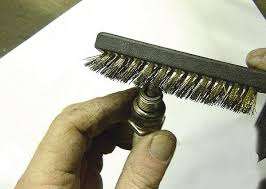
A wire brush can help remove surface dirt, carbon buildup, and debris. Hold the brush firmly and scrub the spark plug gently.
Alternatively, a specialized spark plug cleaner or blaster (which uses compressed air) can be used to clean off stubborn carbon deposits.
3. Inspect After Cleaning for Reuse:
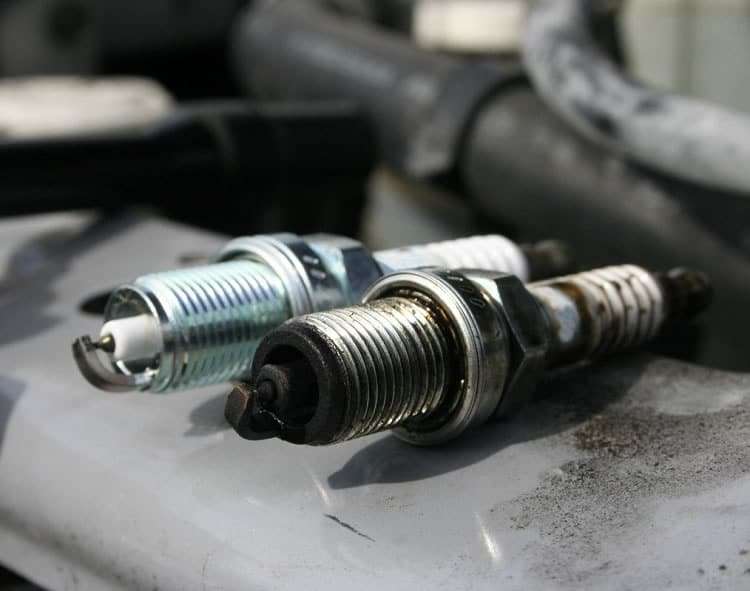
Once you are done cleaning them, visually inspect the spark plugs for any signs of damage or wear, cracks, or extreme corrosion. If they appear damaged or excessively worn, then replacing them would be the best option because the cleaning cannot restore the something that is broken.
Moving to the final part of this video, Replacing Spark Plugs:
Follow the same procedure as cleaning the spark plugs: disconnect the wires and remove the old plugs using the spark plug socket. And remember, you will need a new spark plug here to replace the old one with.
And here is what to do next ones you are ready to install the next new plugs.
First, check and Set the Correct Gap for New Plugs:
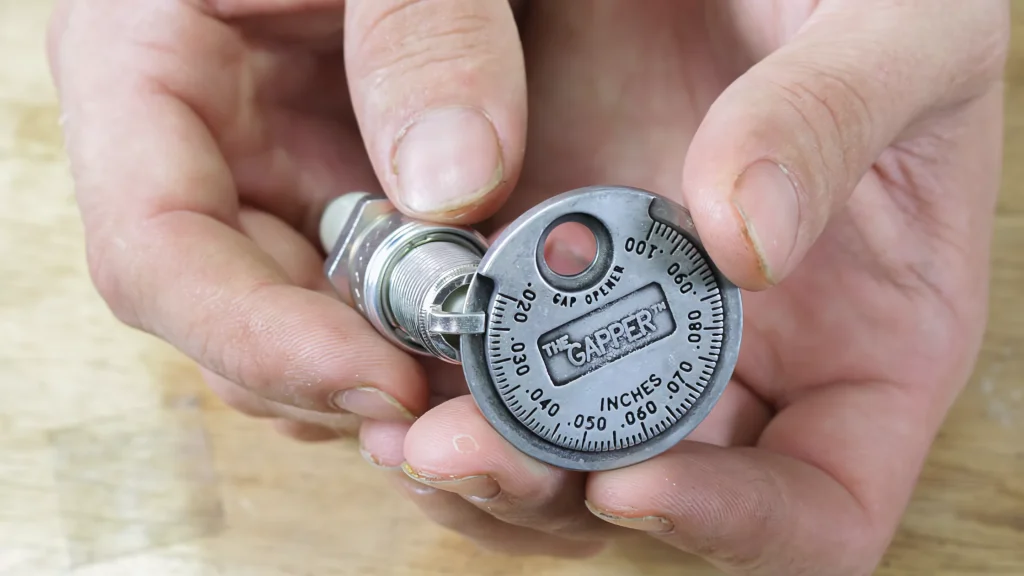
- Before installing the new plugs, check the gap (the space between the center electrode and the ground electrode). This is very important for ignition efficiency.
- Use a spark plug gap tool to measure and adjust the gap if needed. You’ll find the recommended gap in your vehicle’s manual or on the spark plug packaging.
- If the gap is too wide or narrow, gently adjust it using the gap tool until it matches the manufacturer’s specifications.
Installing and Tightening New Spark Plugs:
- Insert the new spark plug into the socket and carefully thread it into the hole by hand. This prevents cross-threading.
- Once the plug is seated, use a ratchet wrench to tighten it. Be sure to follow the manufacturer’s torque specification (you can find this in your manual).
- Don’t overtighten, as this can damage the threads or the spark plug. If you’re unsure, a torque wrench can ensure the correct pressure.
Common Mistakes to Avoid During Replacement:
- Cross-threading: Be sure the spark plug goes in straight. If it feels tough to thread, stop and realign it. Never force it.
- Overtightening: Tightening spark plugs too much can strip the threads or break the plug. Stick to the recommended torque.
- Ignoring the gap: Not checking the gap before installation can lead to poor engine performance. Always verify it matches the specification.
- Forgetting to replace the ignition wires: If you removed ignition wires or coils, make sure to reconnect them correctly to avoid misfires.
A quit spark plug maintenance tip to prevent spark plug problems and ensure the longevity of your plugs before you go:
1. Checking your Spark Plug Gaps Regularly:
Spark plugs can lose their gap over time due to wear or deposits. Use a spark plug gap tool to check the gap during each replacement or when troubleshooting issues. Ensure it matches your vehicle’s specifications for the best performance.
2. Using High-Quality Fuel to Prevent Buildup:
Low-quality or contaminated fuel can lead to excessive carbon buildup on your spark plugs. Use high-quality fuel and consider using fuel additives that clean the combustion chamber to minimize deposits and extend the life of your spark plugs.
3. Adhering to Manufacturer-Recommended Replacement Schedules:
Spark plugs don’t last forever. Most vehicles require new spark plugs every 30,000 to 100,000 miles, depending on the type of spark plug. Always follow your vehicle’s recommended replacement schedule to avoid performance issues and prevent premature engine wear.
And that’s a wrap for this video, now, if you like posts like this, then check out this video here, where we talk about the symptoms, causes, and how to fix a bad EGR valve.

